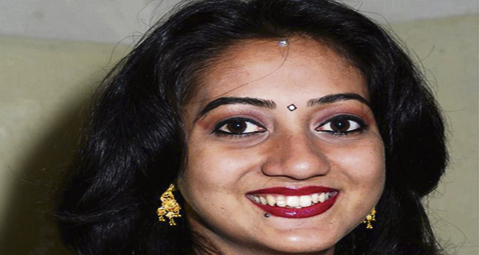November 30 | ![]() 0 COMMENTS
0 COMMENTS ![]() print
print

Propaganda, abortion and the media
— Joseph Bradley looks at the media hysteria regarding the tragic death of Savita Halappanavar and her unborn baby
Almost daily throughout the popular Scottish and British media the morality of Catholicism is overtly or covertly challenged, condemned, slated for being behind the times, labelled as superstitious, irrelevant, ringing of inequality, narrow-mindedness, and for being bigoted, sexist, exclusive and lacking in humanity: indeed, of creating more problems than it is worth. In Britain, much of Ireland’s traditional adherence to Catholicism can also become a specific target and an exemplar of how the brutality and ignorance of the Catholic Faith can hold a society back from ‘progressing’ into the modern civilised rational world of today.
Recent headlines in Scottish newspapers provide some good examples. ‘The crying shame of a Catholic country’ (Scotland on Sunday), ‘Father urges Irish abortion reforms’ (The Herald) and ‘The right to choose is about respect: The death of a woman refused a life-saving abortion demonstrates a disregard for human dignity’ (The Scotsman). Loaded, partial and prejudicial might be the conclusion if it was relevant to take these broadsheets to an appropriate court accusing them of lying or constructing narratives that deny an often self-proclaimed objective enquiry. As with almost any other country the Scottish/British media is highly ideological, and frequently anti-Catholic and anti-Christian.
These newspaper headlines were referring to the recent tragic case of Savita Halappanavar, the Indian woman who died from septicaemia and E Coli ESBL along with her unborn child in University College Hospital in late October when her pregnancy ran into severe difficulties. As is often the case, the relevant articles and headlines are full of inaccuracies and propaganda. Many of these writers have long records of condemning Catholics, Catholic thinking, beliefs, practices, morality and the Church.
One writer, no stranger to having a go at the Catholic Faith, reported that ‘another atrocity was carried out by religious zealots… when doctors in the Republic of Ireland refused to abort the baby she [Mrs Halappanavar] was miscarrying because they could still hear its heartbeat. “This is a Catholic country,” the medics told Mrs Halappanavar and her husband.’ Further, that ‘Halappanavar’s parents… are justifiably outraged at the ‘barbarity’ of the religious code which produced such a travesty of healthcare [and which] shames a nation which has steadfastly refused to bring itself into line with the rest of the world.’
Many if not most columnists in Scotland, Britain, and many in Ireland, argued likewise reflecting the ideological coherence of this influential font of unbiased ‘knowledge.’ Nonetheless, apart from the historical and traditional attitude towards ‘Catholic Ireland’ many Scottish writers, including a number chosen for publication in respective letters pages, also reflected the dominant orthodoxies of this country and its ‘abortion culture’ and especially concerning the value, worth and purpose of human life. The case has become an opportunity to whip up hysteria to promote the deliberate killing of innocent human life as an answer to so called unwanted pregnancies.
Hugh McLoughlin—who has often written for the Scottish Catholic Observer—wrote a letter to The Herald contradicting its report on the case. He pointed out that one of India’s leading consultants in Obstetrics and Gynaecology, Dr Hema Divakar, stated that contrary to most media reports in Britain and Ireland and ‘based on information in the media, in that situation of septicaemia, if the doctors had meddled with the live baby, Savita would have died two days earlier.’
Dr Divakar added that: “Having understood that the baby was not going to make it, the couple would have asked for termination. But as Savita’s infection may have required aggressive treatment at that stage, doctors must have felt the need to prevent complications. The usual [practice] is to meddle the least till the mother is stable.”
Mr McLoughlin’s letter was not published. How many more such informative letters were confronted with the same fate?
A mother’s death in Ireland—few relevant reports made much of the death of the 17-week-old gestating baby—quickly became a propaganda coup for arguing for the dismantling of Ireland’s protection of unborn children. Nevertheless, as is often the case with abortion, the Halappanavar affair has been an example of the British and Irish media not letting the facts get in the way of a ‘good’ story, or not getting in the way of the creation of a narrative that amounts to little more than propaganda against a philosophy that supports the precious nature of life in the womb.
Abortion and Ireland’s defence of the unborn has clearly been created as ‘the’ substance, central and dominant issue of this tragic story. The pro-abortion lobby has invariably not only rushed to judgement on what happened and in the process misrepresented Irish Law, but has also created a cause célèbre without knowing, comprehending or lying about, and therefore opposing, relevant Catholic perspectives: thus the ‘dying in the name of religion’ headlines. For anti-Catholics, especially those that support abortion, the weight of their traditional claims regarding abortion in Ireland has been fuelled by the assertion of Mrs Halappanavar’s husband Praveen that he was told that abortions don’t happen in Ireland, ‘this is a Catholic country.’ This line has been repeated in the media countless times despite Praveen’s solicitor saying there is no record in Savita’s file of her request for an abortion.
In Ireland, abortion is illegal, despite the weight of media propaganda that contradicts and condemns this principle. Further, this is the manifest will of the majority of voters in Ireland as expressed at various referendums, regardless of the sensational media attention given over to various pro-abortion protests that have taken place in Ireland in the past few weeks.
In terms of septis, the direct cause of death of Mrs Halappanavar, it requires very close monitoring and treatment. It is dangerous and potentially fatal. In Britain between 2006 and 2008 it was the leading cause of direct maternal deaths.
Thirteen women died, of whom five were pregnant under 24 weeks’ gestation. Women die, not because doctors are pro-life and deny or delay necessary treatment but because the condition is medically challenging and potentially deadly. Some deaths occur without negligence, though the Royal College of Obstetricians and Gynaecologists states, in relation to the maternal deaths from sepsis between 2003 and 2005, ‘sadly, substandard care was identified in many of the cases.’ In terms of the law in Ireland if medical protocols are not followed when difficulties arise during pregnancy/giving birth and the result is the death of a mother, as in the Halappanavar case, an enquiry will result. This is now underway and no one as yet knows the outcome.
Niamh Uí Bhriain of Ireland’s Life Institute said it is ‘outrageous’ to suggest that Catholic teaching would prevent proper treatment for a pregnant woman. “Neither the ethos of the Catholic Church nor the pro-life laws of Ireland would prevent any woman from receiving all the treatment she requires in order to preserve her life,” she said, adding that ‘abortion doesn’t cure septicaemia and is not a treatment for miscarriage.’
A number of years ago John Bonnar, one of Ireland’s leading gynecologists, told a parliamentary committee that ‘there is a fundamental difference between abortion carried out with the intention of taking the life of the baby… and the unavoidable death of the baby resulting from essential treatment to protect the life of the mother.’ In this vein, Ms Uí Bhriain also said that Ireland’s laws already prioritise the life of the mother. Under the current law, doctors who fail to intervene to save a woman’s life are subject to disciplinary action for negligence. She explained that ‘the Irish Medical Council guidelines are incredibly clear, that the doctors must intervene to save a woman’s life, if they do not they are guilty of misconduct.’
Britain is one of the foremost countries in the world to procure and kill human life in the womb. On the island of Ireland, a woman’s womb remains one of the safest places on earth for the unborn. Midwifery care in Ireland is amongst the best in the world; much safer than it is either in Britain or in the US. At least three women died last year in England and Wales from abortion gone wrong. The figures are unknown for the US. We know the figure for Ireland: none. Ireland has a maternal death rate of six per 100,000, one of the lowest in the world.
The dominant media narrative being run around pro-abortion countries and in societies where there are powerful pro-abortion campaigners is not really about the sad story about a woman’s death resulting from septicaemia caused by a miscarriage. It is a story about Ireland’s resistance to legislation allowing abortion and to date its unrelenting ethos of respecting, recognising and protecting human life in its mother’s womb.
This is anything but a crying shame for any country, Catholic or not. For those defending unborn life it is a mark of pride reflecting a sense of humanity and justice unfortunately not shared widely enough.











